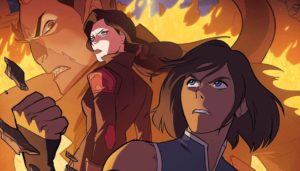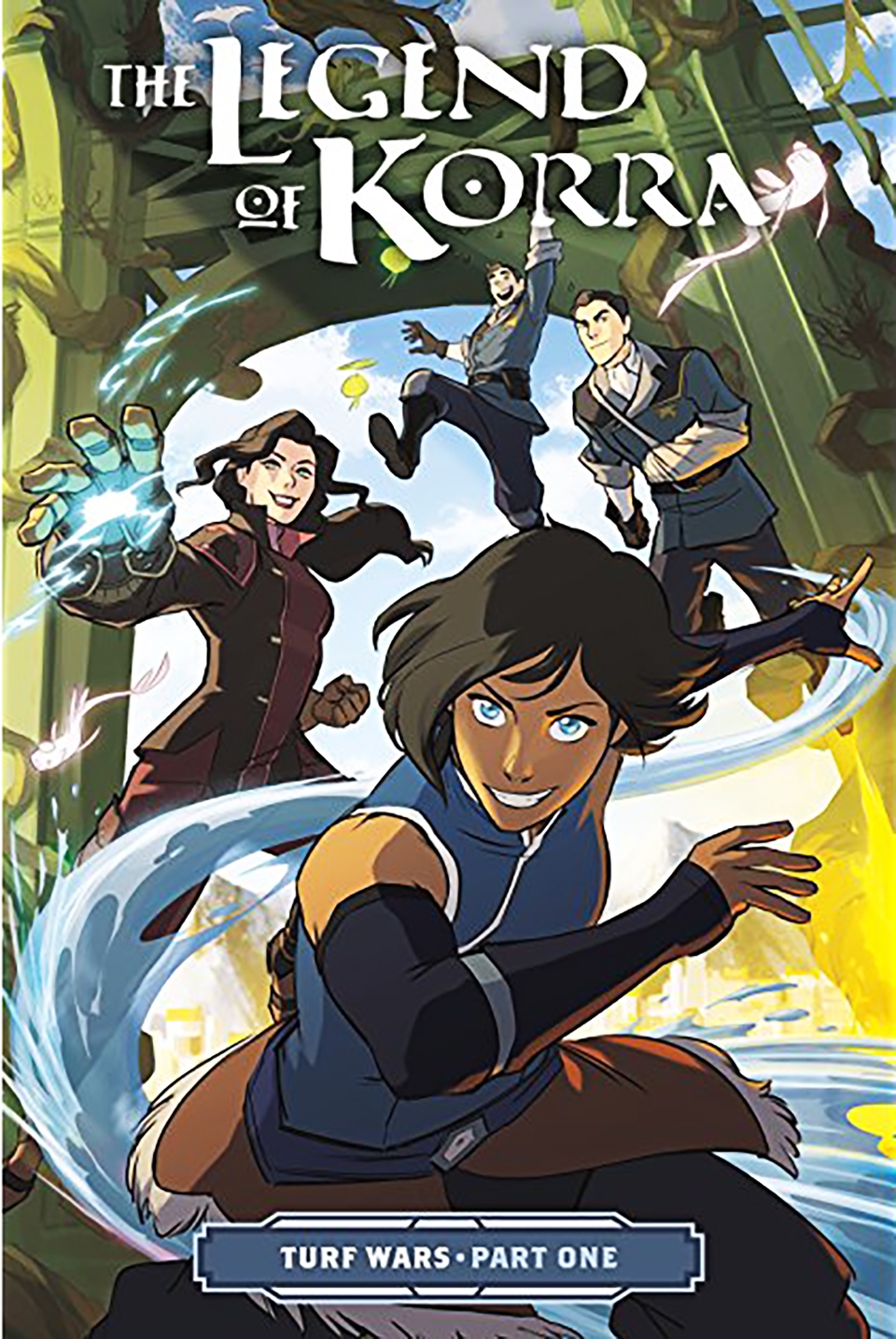
Written by Michael Dante DiMartino, Part Two of The Legend of Korra: Turf Wars follows Korra and her ability to accomplish her duties as the Avatar while remaining neutral with the society’s troubles.
By Nicole Prieto | Staff Writer
02/08/2018
With beautifully illustrated, action-packed sequences and an engrossing narrative, Part Two of The Legend of Korra: Turf Wars does not disappoint as it delves further into the rising tensions in Republic City. The comic opens with Korra and members of the Air Nation entering the Spirit World once again, only to find it deserted and hostile to their presence. When they barely escape a field of rotting plant life rearing to attack, they return to the metropolis — just as General Iroh II establishes a restricted military perimeter around the Spirit Portal. Tasked with balancing the needs of the threatened spirits against the growing distrust of the displaced people in the city, Korra faces her greatest challenge yet as she goes toe to toe with Tokuga’s now insatiable lust for power.
Tokuga, mutated by the angered spirit that phased through him in his last battle with the Avatar, is deadlier than ever. We last saw him turn on former employer and major land developer Wonyong Keum, forcing the latter to dedicate his resources for Tokuga’s own ends. As with the Legend of Korra series itself, Part Two holds no bars on making its villains credible threats with no remorse over killing. Tokuga does not think twice about bringing an older Triple Threats member to his knees (and several feet off the ground) in a vice-grip chokehold with his new tentacle arm. And he is definitely not coy about trying to commit murder when his plans call for it. Part Two teases a bit about his mysterious background, something that is likely to play a bigger role in Part Three.
Asami gets more uncomfortably acquainted with the increased gang tensions in the city. She receives an unwelcome visit from the somewhat flirtatious leader of the Creeping Crystals, Jargala, which prompts her to hire extra security and put her already frazzled girlfriend on edge. As Korra continues butting heads with the obstinate President Raiko, Tenzin struggles to find a peaceful path for the citizens of Republic City and the angered spirits to get along.
Meanwhile, Zhu Li — who is relentlessly heading the evacuee relief efforts — develops United Republic presidential ambitions in the wake of Raiko’s self-serving, political maneuvering. The latter’s silver tongue insists on taking credit for her and Asami’s work on the city’s new home development project. He even turns a group of Republic City evacuees against the beleaguered Avatar — all of whom become suddenly appalled that she went on vacation after saving the world.
Unfortunately, handling crowd reactions is maybe series co-creator Michael DiMartino’s least believable aspect of the comic. In the span of two panels, Korra’s back is metaphorically up against the wall — notwithstanding four animated seasons of her preventing cataclysmic destruction to Republic City and reality itself. Narratively, it is obvious that DiMartino is trying to save page space by not giving every one-off background character a complex personality; still, even this fictional crisis demands a bit more tact in handling the victims’ anxieties about having roofs over their heads and food on their plates. Undermining their ability to see through people like Raiko or having them suddenly forget what Korra has done right feels like a stretch.
Series fans also get more glimpses at characters like Varrick and Lin. Varrick’s propensity for benign acts of selfishness and enthusiastic love for Zhu Li is on full display, and Lin is as ornery as ever as she works with Mako and Bolin on tracking down Tokuga. The comic so far is sparing of its explosion of unnecessary tertiary characters that defined the earlier seasons of its animated counterpart. It is unknown if readers will see more of the Beifong clan in the next book, for instance, but it would hardly be a sore point if we did not.
The comic’s biggest strength is juggling several plotlines and motivations that were absent from the more idyllic atmosphere of Part 1. Prolonged tensions about coming out to friends, family and the public give way to brief, positive acknowledgments by mainstay characters like Tenzin and Lin. So to speak, the honeymoon phase of Korra and Asami’s new relationship is over. Their affection and mutual support are no less present. (There is even a shout-out to their infamous turtle duck boat date from Bryan Konietzko’s 2015 art for the LOK/ATLA Gallery Nucleus Tribute Exhibition.) But both women are up against problems that could threaten everything they worked to rebuild in the still-battered Republic City.
With a powerful cliffhanger and multiple plot resolutions on the horizon, readers will not want to miss out on the upcoming finale, which is currently an Amazon No. 1 Best Seller in the Gay & Lesbian Graphic Novels category. Turf Wars Part 3 is set to release on Aug. 14.

